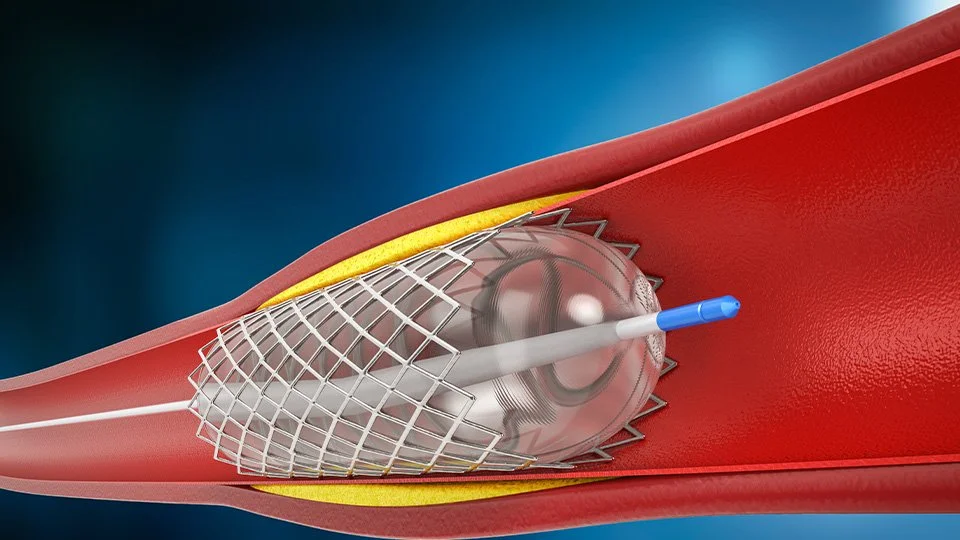Stenting of Veins
Stenting of Veins
Vein stenting is a minimally invasive medical procedure used to treat narrowed or blocked veins. These blockages can arise from various factors, like blood clots, trauma, or chronic venous insufficiency. The procedure involves placing a small, expandable mesh tube called a stent within the affected vein to prop it open and restore proper blood flow.




Why Consider Stenting?
Narrowed or blocked veins can lead to significant health concerns, including pain, swelling, and skin changes. In severe cases, they can contribute to ulcers and increase the risk of deep vein thrombosis (DVT). Stenting helps alleviate these symptoms by ensuring unimpeded blood flow through the veins, improving circulation and reducing the risk of complications.
The Stenting Process
This minimally invasive procedure is typically performed under local anesthesia. Here’s a breakdown of what to expect:
Accessing the Vein: A small incision is made near the affected vein, usually in the groin or leg.
Catheter Insertion: A thin, flexible tube called a catheter is inserted into the vein and navigated to the narrowed or blocked area.
Stent Deployment: The stent is delivered through the catheter and expanded within the blockage site.
Verifying Placement: Imaging techniques like ultrasound or fluoroscopy confirm the stent’s correct positioning.
Closing the Incision: The catheter is removed, and the incision is closed with stitches or adhesive strips.
Recovery and Aftercare
Recovery from vein stenting is generally quick, with most patients resuming normal activities within a few days. Post-procedure care may involve:
- Monitoring the incision site for infection signs.
- Taking prescribed medications to prevent blood clots.
- Attending follow-up appointments to ensure proper stent function.
- Wearing compression stockings if recommended by your doctor.
Potential Risks and Complications
As with any medical procedure, vein stenting carries some risks, such as:
- Infection at the incision site
- Bleeding or bruising
- Allergic reactions to the stent material or contrast dye used during imaging
- Stent migration or blockage over time
However, these risks are relatively uncommon, and the benefits of improved blood flow and reduced symptoms often outweigh the potential complications.
Don’t let vein issues affect your life.
Book a call with us
Conclusion
Vein stenting offers an effective treatment option for addressing vein blockages and improving circulation. By understanding the procedure, the reasons it may be necessary, and the potential risks, patients can make informed decisions about their vascular health. If you experience symptoms of vein blockage, consult a healthcare professional to determine if stenting is the right approach for you.
Conditions We Treat
- Varicose veins
- Superficial Venous Thrombosis Phlebitis
- Thread / spider veins
- Swollen leg
- Deep vein thrombosis (DVT)
- May turners syndrome
- Varicose veins in pregnancy
- Varicose veins in obese patients
- Restless leg syndrome
- Varicose veins of the testicles
- Recurrent Varicose Veins
- Hidden Varicose Veins
- Hemosiderin Brown Stains
- Lipo dermatosclerosis (LDS)
- Venous Eczema
- Leg Ulcers
- Vaginal and Vulval Varicose Veins
- Pelvic Congestion Syndrome (PCS)

